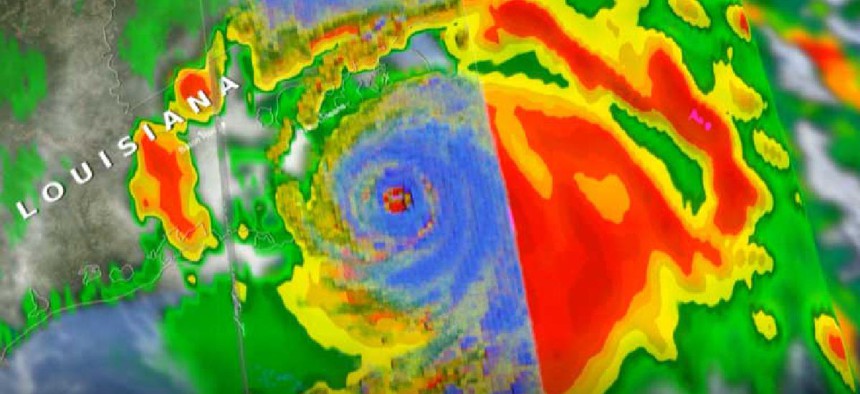NYC beefs up its weather data, storm forecasting


Connecting state and local government leaders
A new report on preparing and responding to extreme weather outlines a number of data-driven initiatives, including hiring a private company to augment data the city gets from the National Weather Service.
Following the storm damage in New York City from Hurricane Ida, Mayor Bill de Blasio announced steps the city would be taking to improve preparedness.
The Extreme Weather Task Force, formed after Ida, issued recommendations on preparing for and responding to major storms. The New Normal: Combating Storm Related Extreme Weather in New York City, lays out the city’s plans to prepare for and respond to dangerous storms. The mayor described the report in a Sept. 27 press event as “a real playbook, real game plan for how we're going to address extreme weather.”
The report introduces a number of initiatives, including broader education of the public on climate emergencies, planning for more severe storms with earlier, more detailed warnings and more evacuations and prioritizing protections for low-income residents, especially those living in basement apartments. The city will also begin conversations with state and federal partners on funding options and investment in a modern sewage and draining system.
The report features a section on storm modeling, tracking and alert systems, and details a plan for an alert system tailored to at-risk areas and “a modern tracking system that will monitor dangerous weather throughout the tri-state area and beyond.”
The immediate enhancements to storm analysis and data initiatives include:
- Expanding the flood sensor network citywide to provide real-time depth data in high-risk locations to inform situational awareness, alerts, future forecasting and long-term planning.
- Enabling real-time crisis information and post-storm assessments via drone data collection, allowing agencies to understand on-the-ground conditions immediately.
- Developing a comprehensive citywide map that integrates flood maps and risk models to visualize the effects of weather and climate hazards and help the city identify the investment areas that would most effectively leverage city resources.
- Partnering with a private weather forecasting service, which will give the city a “second opinion” on National Weather Service forecasts. The city has already issued a solicitation for a private service to build local forecasting at the neighborhood level, alert the city when storm thresholds may be reached and develop custom forecasts/products on demand, accessing data and models NWS does not have.
- Developing a coastal flood vulnerability index that would integrate information about coastal climate hazards with data on vulnerable populations to guide resource allocation, outreach and services to priority neighborhoods.
- Improving projections of future extreme precipitation by accelerating the initiatives in the city’s May 2021 Stormwater Resiliency Plan, specifically producing probability models for future precipitation so engineers can develop technical specifications on the intensity, duration, and frequency of different rainfall scenarios.
- Conducting modeling and mapping initiatives based on Ida’s impact, including mapping the extent of the flooding, improving its stormwater models and building a baseline stormwater map. Various rainfall scenarios and implementation strategies will be modeled to improve emergency response and inform stormwater investments.
Responding to questions from reporters on hiring a weather forecasting partner for information beyond what NWS provides, de Blasio said, “the warnings we get are not sufficient.” The NWS does “good and important work, but we've too often found the reports were too vague or too late, and we need something more urgent,” he added.
“My simple summary would be having a private forecasting capacity to just be that second set of eyes, just like you'd go to a second opinion with a doctor, to tell us if what we're seeing from the National Weather Service looks like the whole story, where there's a possibility of things happening earlier, a higher impact, what level of alert we should go to, someone dedicated to thinking from the New York City perspective, not the whole nation perspective,” de Blasio said. “I think that's going to be really, really valuable.”
The National Weather Service told AP that it welcomed New York City’s plan, calling it “a positive step by adding additional expertise and capacity that may better understand local nuances and can build upon the support NWS provides.”
“We support any coordinated effort by any organization, business or government to improve local preparedness for extreme weather and water events,” the agency said.





